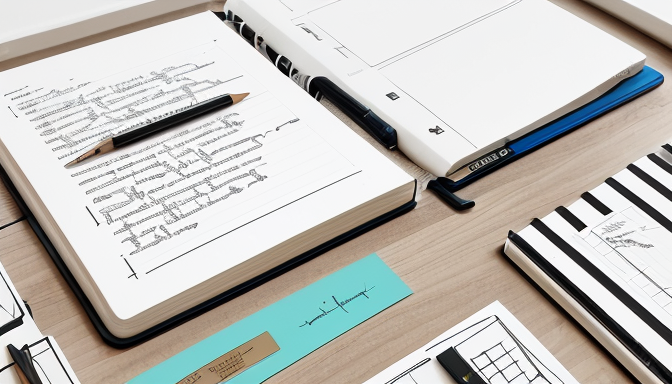This article explores essential typography techniques that enhance design aesthetics, ensuring your text captures attention and communicates effectively. Discover tips to elevate your designs through thoughtful font choices and layouts.
Selecting the appropriate font is crucial for effective communication. Imagine your design as a conversation; the font is the voice that delivers your message. A playful font might suit a children’s party invitation, while a sleek sans-serif could be perfect for a corporate website. It’s all about matching the font with your design’s tone and purpose. Consider the following factors:
- Brand Identity: Your font should reflect your brand’s personality.
- Readability: Ensure your text is easy to read at different sizes.
- Contrast: Choose fonts that stand out against your background.
Proper spacing and alignment can significantly impact readability. Think of white space as the breathing room in your design; too little can make it feel cramped, while too much can create disconnection. Line height plays a vital role in guiding the reader’s eyes smoothly across the text. For instance, a line height of 1.5 is often ideal for body text, providing enough space without feeling too sparse. Text alignment is equally important—left-aligned text is generally easier to read, while center-aligned text can add a touch of elegance in headings or quotes.
In conclusion, typography is not just about choosing pretty fonts; it’s about creating a visual hierarchy that enhances the user experience. By paying attention to font selection, spacing, and alignment, you can transform your designs from ordinary to extraordinary. So, what are you waiting for? Dive into the world of typography and let your designs speak volumes!
Choosing the Right Fonts
When it comes to design, can make or break your project. Think of fonts as the voice of your design; they convey emotions and set the tone. Just like you wouldn’t wear a tuxedo to a beach party, you wouldn’t use a formal font for a casual brand. So, how do you pick the perfect typeface? It’s all about aligning your font choices with the message you want to communicate.
First off, consider the personality of your brand. Are you aiming for a modern, sleek look or something more traditional and classic? For instance, sans-serif fonts like Arial or Helvetica exude modernity, while serif fonts like Times New Roman or Georgia feel more established and trustworthy. You can even mix and match to create a unique aesthetic, but be cautious not to use more than two or three fonts in a single design to avoid confusion.
Moreover, don’t forget to explore unique fonts and typography packs. Websites like Google Fonts or Adobe Fonts offer an extensive library of options that can enhance your creative designs. Remember, the right font can not only improve readability but also elevate your overall branding. So, dive into the world of typography and let your text do the talking!

Spacing and Alignment Techniques
When it comes to creating stunning designs, spacing and alignment are your best friends. Imagine trying to read a book where the words are crammed together like sardines in a can—frustrating, right? Proper spacing gives your text room to breathe, making it not only more readable but also more visually appealing. Think of it as giving your design a fresh, clean look that invites the reader in.
One key aspect to consider is white space. This isn’t just empty space; it’s a crucial part of your design that allows the eye to rest. By strategically placing white space around your text, you can guide the reader’s focus to important elements. For instance, if you have a captivating headline, surrounding it with ample white space can make it pop, drawing the viewer’s attention instantly.
Next up is line height. The height between lines of text can greatly affect how your content is perceived. A line height that’s too tight can make paragraphs feel suffocating, while one that’s too loose may disrupt the flow. Aim for a balance—generally, a line height of 1.5 times the font size works wonders. If you’re unsure, experiment with different settings until you find that sweet spot!
Lastly, let’s talk about text alignment. Whether you choose left, right, centered, or justified text, each alignment tells a different story. Left alignment is the most common and easiest to read, while centered text can create a more formal or artistic feel. Just remember, consistency is key—whatever you choose, stick with it throughout your design.
In conclusion, mastering spacing and alignment techniques can elevate your typography game to new heights. So, don’t just throw down some text and call it a day; take the time to craft a layout that’s not only functional but also visually stunning!
Frequently Asked Questions
- What is typography and why is it important?
Typography is the art of arranging text in a way that makes it visually appealing and easy to read. It’s crucial because it influences how your message is perceived. Think of it as the outfit your words wear; the right typography can make your content stand out and resonate with your audience.
- How do I choose the right font for my design?
Choosing the right font involves understanding the tone and purpose of your design. Ask yourself: does this font convey the right emotion? Pair fonts that complement each other and ensure they align with your brand identity. Remember, a playful font might not suit a formal business report!
- What role does spacing play in typography?
Spacing is like breathing room for your text. It enhances readability and guides the reader’s eye. Proper line height, letter spacing, and margins can transform a cluttered layout into a harmonious one. Think of it as giving your words space to shine!
- Can typography affect my website’s SEO?
Absolutely! While typography itself isn’t a direct ranking factor, a well-designed site with good readability can reduce bounce rates and improve user experience, which are important for SEO. Plus, using web-safe fonts ensures your content is displayed consistently across devices.